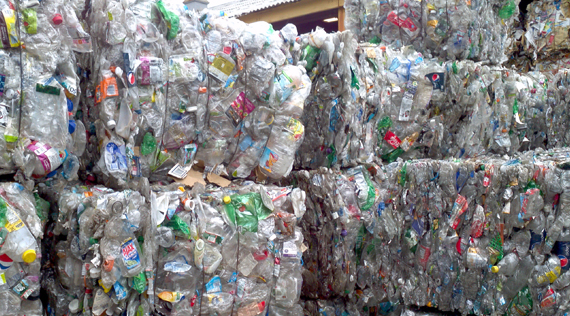 After removing them from the blue-box program seven years ago because there was
After removing them from the blue-box program seven years ago because there was
no resale market for them, the City of Ottawa has returned a wide array of plastics to its recycling program.
Effective immediately, most household plastic and all plastic food containers may now be tossed in the blue box — anything with a plastics number from 1 to 7 imprinted on it (look for the number surrounded by a triangular arrow pattern). Exceptions include Styrofoam, plastic bags and plastic toys.
But all kinds of new things are allowed, including plastic planting trays and flower pots, single-serving yogurt containers, clear boxes that lettuce leaves are sold in, big heavy pails used for pool supplies (rinsed out), and thin clamshell containers used for foods such as berries and baked goods.
In fact, some people might be surprised that some of these items weren’t already part of the blue-box recycling program.
“We’ve all been guilty of putting things in recycling that shouldn’t be there, from time to time,” said Councillor Maria McRae, the chair of city council’s environment committee and one of the numerous city officials on hand at Friday’s announcement at Moncion’s Your Independent Grocer in Riverside South.
Indeed, she said that until now, workers have had to remove items, such as plastic clamshells, at the recycling centre because residents have been throwing them into blue boxes. The confusion was natural, as many of these items used to be accepted and it was hard to keep track of which plastic was allowed into the blue box and what wasn’t. City officials said they hope the new guidelines will make it simpler for residents to recycle.
The confusion goes back a number of years, when the city removed a number of plastic items that were accepted in the blue-box program because there was no buyer for those kinds of materials. But the provincial government, through an agency called Stewardship Ontario, spent millions of dollars to help to develop a market for the plastics that have been brought back into the recycling fold.
With grants from the provincial government of about $1.2 million each, two private companies in southern Ontario have developed ways to separate the many kinds of polymers in these plastics. They are then able to sell each component to manufacturing companies as “virgin” polymers, said Lyle Clarke of Stewardship Ontario. For example, Canadian Tire sells a line of Blue Planet home items, such as laundry baskets and storage boxes, that contain these kinds of recycled polymers.
Recycling these new plastics will still cost taxpayers money in the end: about $46,000. Collecting the additional material will cost $100,000, but the city will receive about $50,000 in revenues from selling the plastics. The city estimates that the inclusion of more plastics in the blue-box program will divert about 1,400 tonnes of material annually from the landfill. That’s not overly significant in the big scheme of things, considering residents sent 190,000 tonnes of garbage to the Trail Road dump in 2004. And it’ll only do a little to move the city’s waste diversion number toward the targeted 60 per cent, from the current 44 per cent.
But city officials hope that simplifying the message of what goes into the blue box will encourage residents to recycle more — of everything. In addition, although those thin plastics are lightweight, they’re bulky. When the city moves to biweekly curbside garbage pickup next year, city officials are betting residents will appreciate the extra room in their garbage bins.
“That 1,400 tonnes is based on our mediocre diversion rates today,” said McRae. “They could be much higher if more people recycle more plastics. And we think this will make it easier.”
Source : www.ottawacitizen.com




